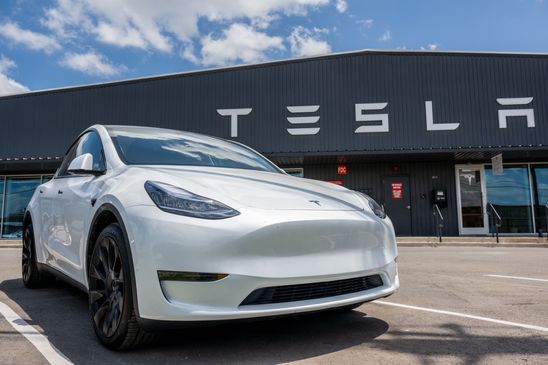Introduction
Tesla (TSLA), a global electric vehicle (EV) company, has recently implemented a discount strategy on its inventory vehicles in the United States to entice consumers. The discounts, particularly for Model 3 vehicles, have doubled in value in the past weeks, reflecting the company’s efforts to work through its supply of unsold vehicles. However, while Tesla refers to these moves as “inventory discounts,” they effectively function as price cuts, indicating a surplus in unsold vehicles and potentially impacting the company’s profit margins. This article will delve into Tesla’s discount strategy, its effect on profit margins, and the stock’s performance amidst these developments.
The Growing Discounts
Tesla’s recent discounts on its U.S. Model 3 lineup have been aimed at reducing the inventory of unsold vehicles. These discounts, which Tesla claims are not official price cuts, have nonetheless indicated excess supply and have the same impact on profit margins. Initially, Tesla started offering discounts of approximately $1,300 on new rear-wheel-drive Model 3 inventory in the U.S. These discounts were then extended to around $2,800 for some all-wheel-drive (AWD) Model 3 vehicles, while the majority of AWD Model 3 cars received discounts of $250.
Tesla’s discount strategy is an attempt to match vehicle prices with demand. CEO Elon Musk explained during the company’s annual meeting in May that Tesla adjusts pricing based on the observed demand, similar to how other automakers change prices through dealerships. Musk also highlighted that Tesla’s pricing adjustments are more noticeable because the company does not have traditional dealership networks.
Impact on Profit Margins
Tesla’s aggressive price-slashing strategy in the first quarter of 2023 had consequences for its profit margins. The company reported a significant decline in first-quarter earnings, with revenue falling short of expectations. Tesla’s profit gross margin decreased to 19.3%, down from 23.8% in the previous quarter and 29.1% compared to the previous year. Auto gross margins, excluding regulatory credits and leases, also declined to 18.3% from 23.8% in the fourth quarter, remaining below the 20% gross margin “floor” that Tesla had previously targeted.
These figures indicate the potential impact of the discount strategy on Tesla’s profitability. By reducing prices to match demand, the company sacrifices profit margins, especially if it engages in aggressive price cuts. The decline in profit margins suggests that Tesla may be prioritizing sales volume and market share over immediate profitability.

Stock Performance and Investor Sentiment
Tesla’s stock performance has experienced fluctuations amidst the discount strategy developments. While the company initially faced early losses, it rebounded and saw a 1.8% increase to 207.52 on Thursday, remaining just below a buy point. The stock’s upward momentum was supported by rumors of Tesla unveiling an upgraded Model 3 at its Shanghai plant. However, these rumors did not materialize during the plant tour.
Despite the fluctuations, Tesla’s stock has shown resilience in recent weeks. It rose 7.2% the previous week and surged 4.1% on Tuesday, surpassing the 200-day line for the first time since September. Overall, the stock gained more than 24% in May and has experienced a remarkable 100% surge from its January low.
Technical Analysis and Future Prospects
From a technical perspective, Tesla’s stock has formed a cup base with a buy point at 207.89. Although the pattern could also be interpreted as a double-bottom base, the buy point remains the same. It is worth noting that the base formed below the 200-day line, which is not ideal for a strong breakout. However, the 200-day line is currently below the 200 level and the buy point, potentially providing support to the stock’s upward momentum.
Looking ahead, Tesla’s stock performance will depend on various factors, including the success of its discount strategy in reducing inventory, the company’s ability to maintain strong sales volume, and investor sentiment towards the EV industry as a whole. Additionally, any significant developments in Tesla’s product lineup and expansion into new markets could also impact the stock’s performance.
Conclusion
Tesla’s recent discount strategy, despite being referred to as “inventory discounts,” effectively functions as price cuts to address excess supply of unsold vehicles. While these discounts aim to match prices with demand, they have resulted in a decline in Tesla’s profit margins. The impact on profitability underscores the company’s emphasis on sales volume and market share over immediate profitability.
Tesla’s stock has displayed resilience, experiencing both ups and downs amidst the discount strategy developments. The stock’s performance will depend on various factors moving forward, including the success of the discount strategy, sales volume, investor sentiment, and broader developments in the EV industry.
As Tesla continues to navigate the challenges of inventory management and pricing, investors will closely monitor the company’s ability to strike a balance between attracting consumers with discounts and maintaining sustainable profit margins.
©traders-news.online










